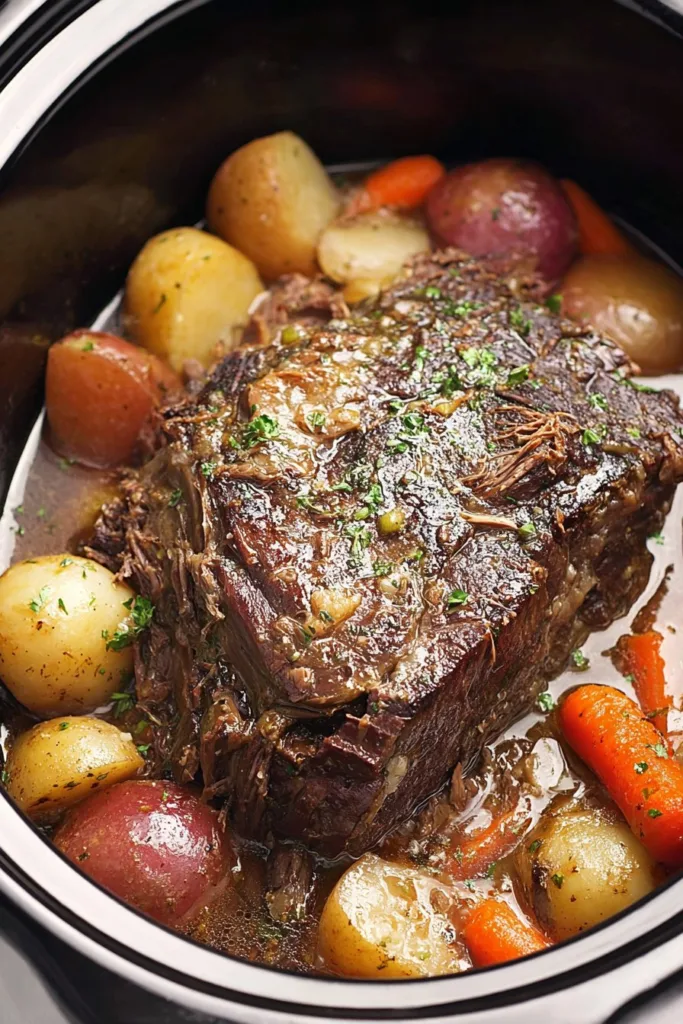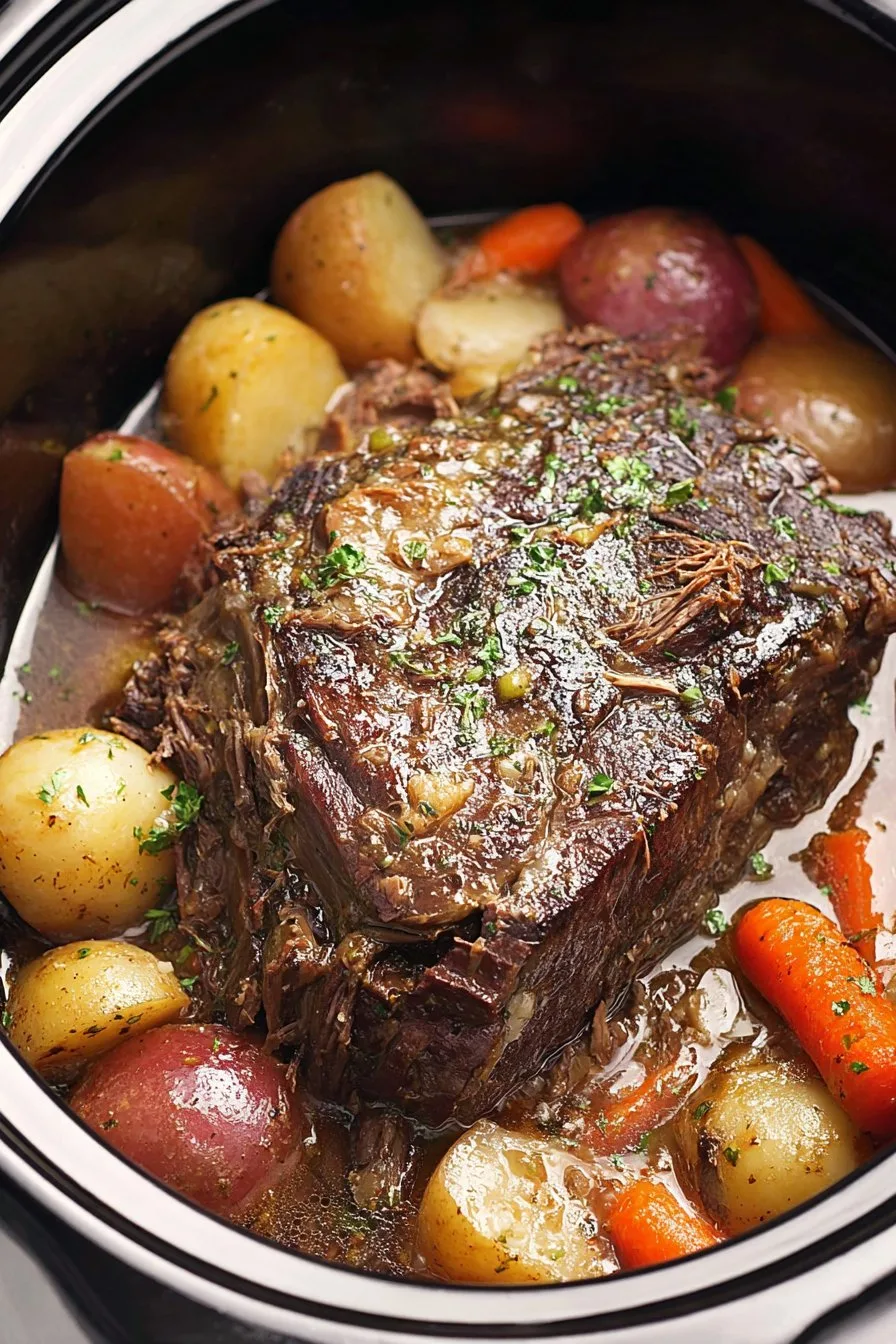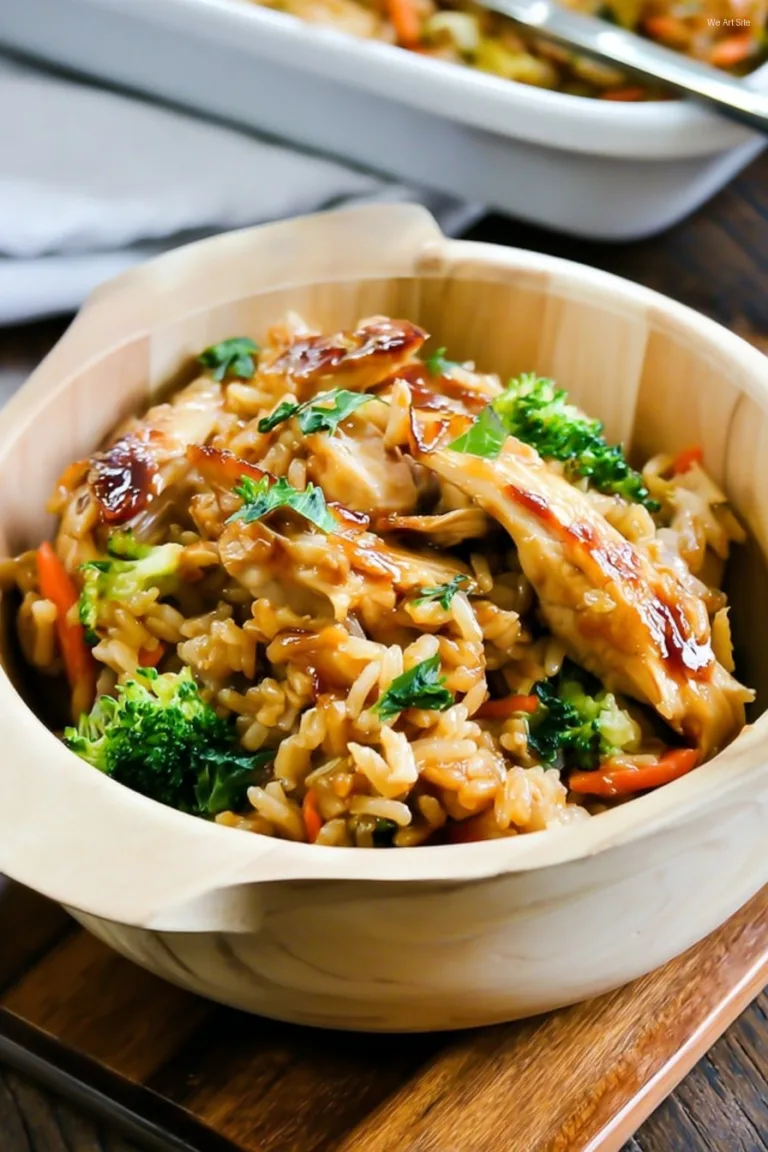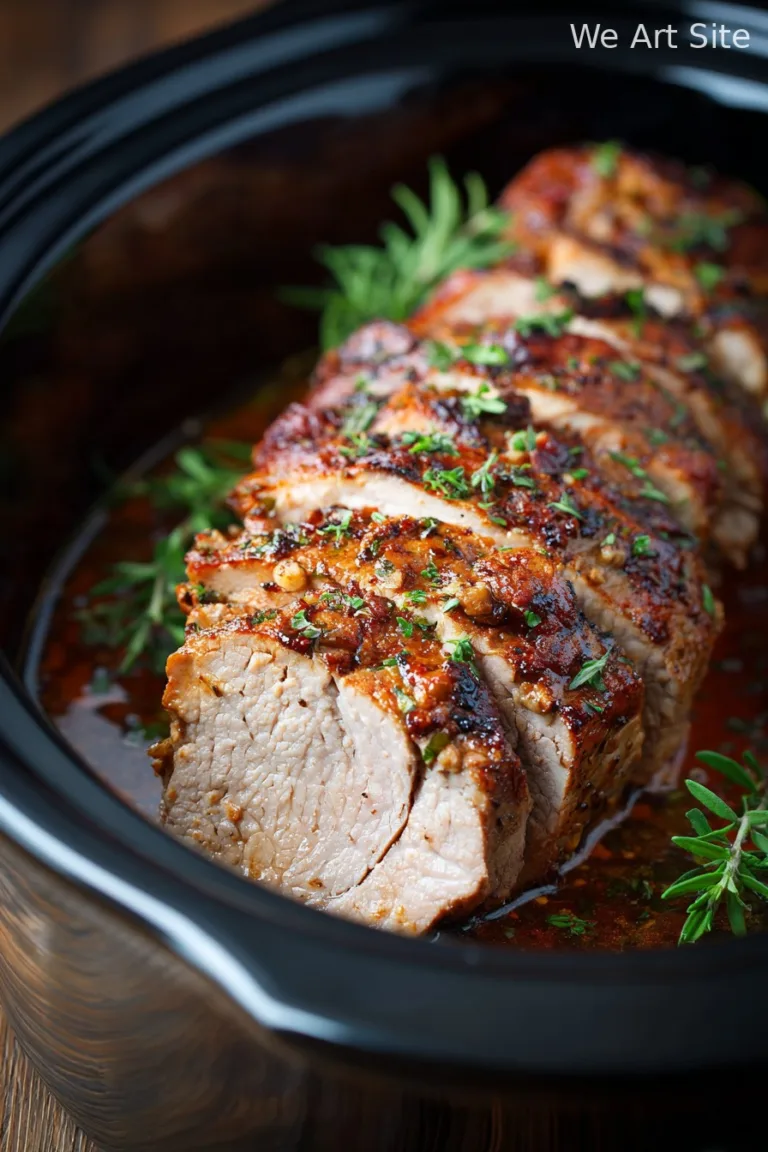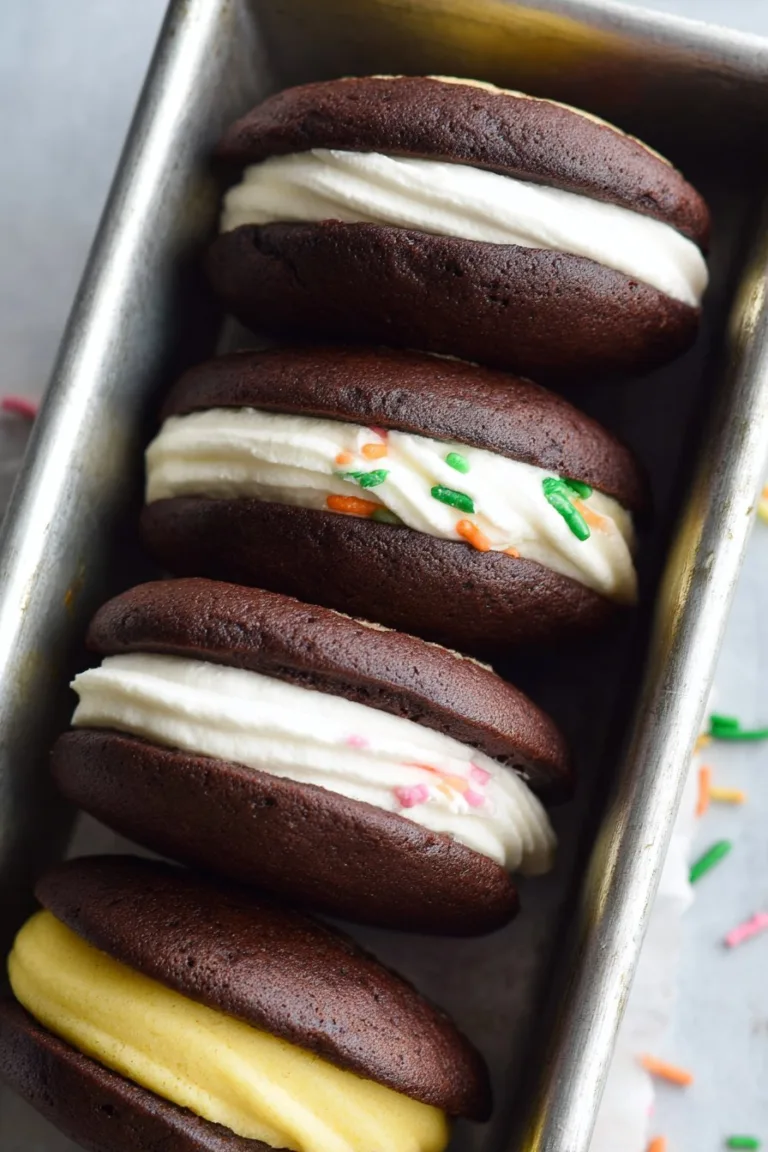Catching Up Over Comfort Food: My Slow Cooker Roast Story
Hey there, friend! So, let me tell you—a slow cooker beef roast with potatoes and carrots is basically my culinary security blanket. There’s just something about tossing everything in one pot, walking away for hours, and coming back to that mouthwatering smell filling the whole house. I think the first time I made this, I completely underestimated how much beef shrinks (and how much mashed potatoes my cousin Tim can eat). But honestly, even when things don’t turn out picture-perfect, it’s just so comforting. By the way, if you ever find yourself standing over the slow cooker at midnight, eating cold leftovers… you’re not alone.
Why You’ll Love This—Or At Least I Do!
I make this when I want the house to smell like I’ve been working all day, even if I’ve only done five minutes of chopping (don’t tell anyone). My family goes a bit bonkers for this because it’s cozy, hearty, and, well, it’s one of those meals that feels like a treat even though it’s secretly lazy. Sometimes I get a little annoyed that the potatoes soak up all the broth (gravy hogs!), but hey, more flavor for them. If you’ve ever come home cold and tired, and just wanted dinner to greet you at the door—this is it.
What You Need to Make It (And What You Can Swap)
- 3 to 4 pounds beef chuck roast: (sometimes I use brisket if it’s on sale, but the chuck gets super tender—grandma swore by Smithfield, but any brand is fine, really)
- 6–8 small potatoes: Yukon golds work, but I’ll use russets or even those little red ones if that’s what I’ve got
- 4 carrots: peeled and chunked, or a couple handfuls of baby carrots because I’m lazy
- 1 large onion: sliced (though I’ve skipped it and just added onion powder in a pinch)
- 4 cloves garlic: minced—okay, sometimes it’s two if I’m running low, no judgment
- 2 cups beef broth: low sodium is best (but water and a bouillon cube works fine… I’ve done it plenty)
- 1–2 tbsp tomato paste: optional, but it does add a nice richness
- 1 tsp dried thyme and 1 tsp rosemary: or use Italian seasoning if that’s easier (I’ve definitely done it)
- 2 tbsp Worcestershire sauce: or a good glug of soy sauce in a pinch
- Salt and pepper: to taste (I never measure, just sprinkle)
- 2 tbsp olive oil (for searing, but honestly, you can skip it if you must)
How I Actually Make This (And the Bits I Sometimes Forget)
- Sear the roast: Heat up a skillet with olive oil, then brown the roast on all sides. Sometimes I skip this if I’m in a rush, but it really does add flavor. (This is where I usually sneak a taste of the seared bits—chef’s tax!)
- Layer the veggies: Throw the potatoes, carrots, and onion into the bottom of your slow cooker. Don’t worry if it looks a bit overcrowded. It always cooks down.
- Toss in the beef: Plop the roast right on top of the veggies. Doesn’t matter if it fits perfectly. Mine never does.
- Add garlic and seasonings: Sprinkle the garlic, herbs, salt, and pepper over everything. Top with tomato paste if using (sometimes I just dollop it on, no finesse needed).
- Pour in broth and Worcestershire: Try to pour around the sides so you don’t wash off all the seasoning. Or just dump it in and give a little stir. I’m not judging.
- Set and forget! Cover and cook on LOW for 8–10 hours (or HIGH for 5–6 if you’re in a hurry, but low is better—trust me). The roast should be fall-apart tender. If it’s not, just let it go another hour. No big deal.
- Check and serve: Take out the roast and let it rest (I always pick at the crispy edges). Then slice or shred as desired. I like to stir the veggies and broth together for extra yum.
Random Notes I Learned the Hard Way
- Once I tried using sweet potatoes; they got pretty mushy. Maybe not the best swap unless you like it soft.
- If you’re out of beef broth, chicken broth will do in a pinch, though the flavor is a little lighter.
- I tend to think this tastes even better the day after, but that’s if you can keep people form eating it all.
- Don’t stress if the veggies look pale at first—once they soak in all that broth, trust me, they come alive.
Variations I’ve Tried (Some Winners, Some… Not)
- Added a splash of red wine for a deeper flavor—totally works (and then you can drink the rest of the bottle, obviously)
- Once I swapped parsnips for half the carrots—strong flavor, but pretty good if you’re into that earthy taste
- I tried using turnips once. Um, a bit too funky for my crowd. Wouldn’t do that again, but hey, maybe your folks are more adventurous!
- If you want a thicker gravy, stir in a little cornstarch mixed with water at the end—learned that trick here
Equipment (Or, What If You Don’t Have Everything?)
- Slow cooker: I use a 6-quart one, but if yours is a bit smaller, just squish things in. Or, in a real pinch, use a Dutch oven in the oven at 300°F for 3–4 hours (it’s not quite the same, but it works!)
- Skillet for searing: Nice to have, but if you don’t want to dirty another pan, just skip it. Life’s too short.
- Good knife: Or your favorite chopper, whatever gets the job done
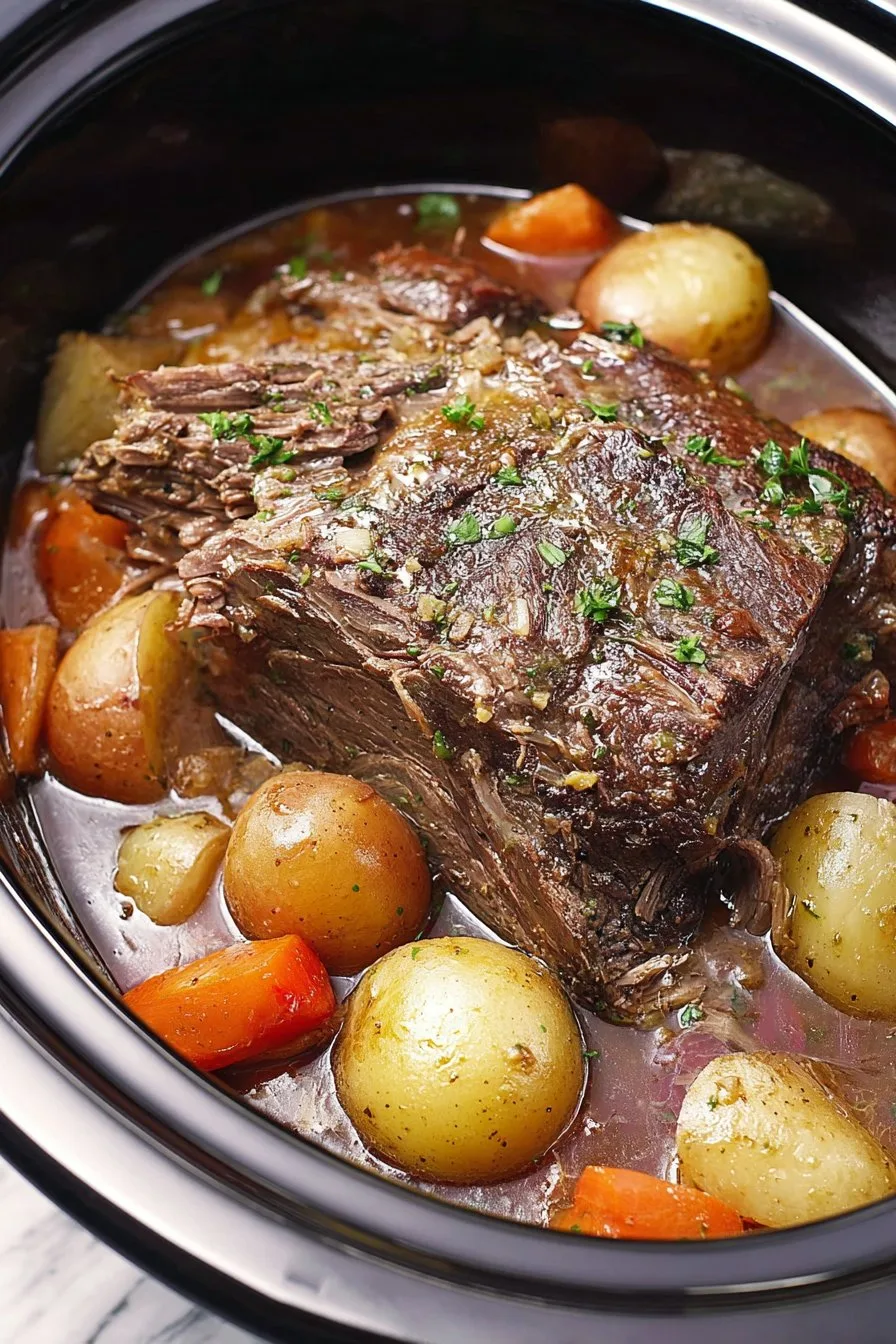
How to Store It (If You Actually Have Leftovers)
Scoop everything into airtight containers and toss in the fridge—it’ll keep for 3–4 days. Or freeze for a rainy day (up to 2 months), though honestly, in my house it never lasts more than a day! If you’re reheating, the microwave is fine, but if you want to pretend it’s freshly made, gently reheat on the stove with a splash of broth or water.
My Favorite Ways to Serve This (Totally Not Traditional)
I always serve this with crusty bread (shout out to Sally’s easy bread recipe), because sopping up the juice is the best part. Sometimes, if I’m feeling fancy or it’s Sunday dinner, I roast some green beans on the side too. Oh, and my cousin insists on a dollop of horseradish cream—go figure.
Pro Tips (Learned the Hard Way…)
- I once tried rushing the searing step—yeah, it just tasted flat. Give it the extra 5 minutes, you’ll be glad.
- Don’t overload the slow cooker; I crammed too many veggies in once and it overflowed. Lesson learned.
- Actually, I find it works better if you cut the potatoes a bit bigger than you think—otherwise, they kinda disappear.
FAQ—Honest Answers to Things I’ve Actually Been Asked
- Can I prep everything the night before?
- Sure can! Just keep the veggies and meat separate until you’re ready to cook, otherwise the potatoes get weirdly gray. Not dangerous, just odd looking.
- What cut of beef is best if I can’t find chuck?
- Brisket or bottom round works well; I’ve even used stew meat in a pinch, though it’s not quite as tender. But, beggars can’t be choosers, right?
- Is it possible to cook this on high the whole time?
- Yeah, but the meat won’t be as fall-apart tender. I’ve done it when I’m pressed for time; it’s fine, just not magical.
- Can I add more veggies?
- Go for it! Just don’t add so many that there’s no room for the beef. I learned that the hard way—overflow city.
- How do I make this gluten free?
- It already is, unless you add gravy thickener with flour. Use cornstarch instead and you’re golden.
So there you have it, my rambling, overly honest guide to slow cooker beef roast with potatoes and carrots. Give it a try—and if you discover a new twist, let me know, because honestly, I’m always looking for an excuse to make it again!
Ingredients
- 3 lb beef chuck roast
- 1 1/2 lb baby potatoes, halved
- 4 large carrots, peeled and cut into chunks
- 1 large onion, sliced
- 3 cloves garlic, minced
- 2 cups beef broth
- 1 tbsp Worcestershire sauce
- 1 tsp dried thyme
- 1 tsp salt
- 1/2 tsp black pepper
Instructions
-
1Season the beef chuck roast with salt, pepper, and dried thyme on all sides.
-
2Place the potatoes, carrots, and onion in the bottom of the slow cooker.
-
3Lay the seasoned beef roast on top of the vegetables.
-
4In a small bowl, mix together beef broth, Worcestershire sauce, and minced garlic. Pour the mixture over the beef and vegetables.
-
5Cover and cook on low for 8 hours, or until the beef is tender and easily shreds with a fork.
-
6Remove the beef and vegetables from the slow cooker. Slice or shred the beef and serve with the potatoes and carrots. Spoon some of the cooking juices over the top before serving.
Approximate Information for One Serving
Nutrition Disclaimers
Number of total servings shown is approximate. Actual number of servings will depend on your preferred portion sizes.
Nutritional values shown are general guidelines and reflect information for 1 serving using the ingredients listed, not including any optional ingredients. Actual macros may vary slightly depending on specific brands and types of ingredients used.
To determine the weight of one serving, prepare the recipe as instructed. Weigh the finished recipe, then divide the weight of the finished recipe (not including the weight of the container the food is in) by the desired number of servings. Result will be the weight of one serving.
Did you make this recipe?
Please consider Pinning it!!

